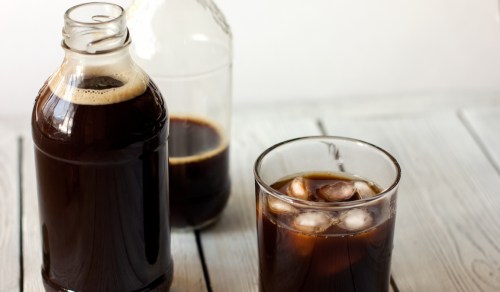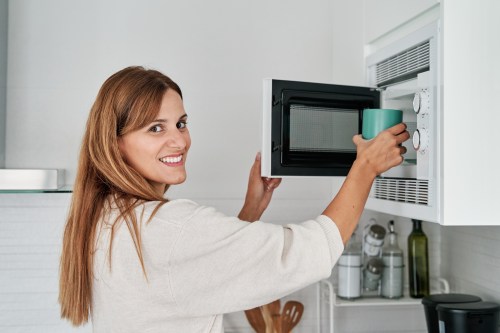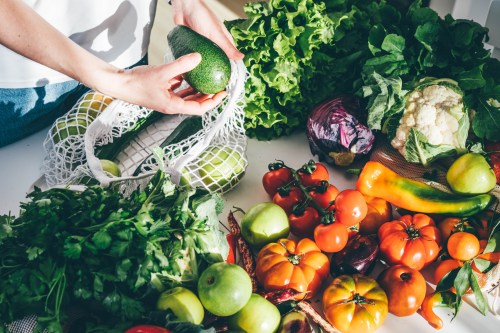Our editors independently select these products. Making a purchase through our links may earn Well+Good a commission
I Tried 4 Barista-Approved Techniques for Making Cold Brew at Home, and My Favorite Method Was Also the Easiest
We tried four of the most popular methods to make homemade cold brew—learn which one was best, plus each technique’s pros and cons.

Calling cold brew a “trend” is like saying “pasta is so five years ago.” Live it, learn it: Cold brew is a year-round staple for many of us. Since its origins in Kyoto, Japan in the 1600s, it continues to retain its popularity with coffee connoisseurs, bleary-eyed 9-to-5ers, and anyone who enjoys the jolt of caffeine that the drink provides.
Experts in This Article
director of coffee, Partners Coffee
coffee expert and co-owner and founder of Bean &
coffee expert and Q grader
There are many ways to make cold brew coffee—you can use everything from a Mason jar to a French press and products designed specifically for the job. But as a long-time coffee lover, I needed to know: Which technique was best for making homemade cold brew?
To determine the best method for making homemade cold brew, I narrowed it down to four of the most popular techniques I’ve come across. These methods include using a Mason jar, a French press, a cold brew maker, and cold brew pouches. Each one involves steeping coffee grounds in cold or room-temperature water in up to 24 hours—a process that differentiates cold brew from old-school iced coffee, which is typically made by brewing hot coffee and letting it chill before adding ice.
It’s this same cold steep method that gives cold brew its potent but smooth flavor. “The longer extraction time, lower temperature, and higher brew strength… [create] a softer, richer flavor profile, with significantly less bitterness,” founder and CEO of Brooklyn Roasting Company Jim Munson told Well+Good.
For each method, I reviewed them based on the ease of preparation and price. I also thought to review them according to taste, but CEO and co-founder of Bean&Bean Coffee Roasters Jiyoon Han says the flavor of coffee won’t vary much among methods. “Most cold brews tend to taste pretty similar regardless of the particular brewing device or method, so keep it simple and don’t spend a lot of money on fancy cold-brew devices,” Han says.
That said, the type of coffee you use will play a key role in how it tastes. According to Partners Coffee director and coffee educator Cary Wong, choosing which type of coffee to use boils down to personal preference, though he likes making cold brew with light-roast Ethiopian coffees. “I like the fruit-forward notes it produces,” he says.
With all this in mind, here’s my review of four different methods of making homemade cold brew.
4 popular methods for making homemade cold brew
Method 1: Mason Jar
Yields two servings
Ingredients:4 ounces ground coffee23 ounces cold or room-temperature water
Materials:32-ounce Mason jarFine-mesh sieve or cheesecloth
- 1.Stir coffee grounds and water in a Mason jar.
- 2.Cover and let the mixture sit overnight or at least 12 hours at room temperature.
- 3.Strain the cold brew through a fine-mesh sieve or a cheesecloth into a carafe.
This method is simple and straightforward, but decanting the cold brew from the Mason jar was messy business and I ended up spilling some of the coffee on my kitchen counter. The added step of straining the cold brew (I used a cheesecloth, but you can opt to use a fine-mesh sieve or a reusable cold brew pouch) is also cumbersome. What’s more, coffee sediments still ended up in my glass.
If I were to do it again, I would use a larger Mason jar to make a bigger batch of cold brew to save me time and effort. Just keep in mind that the larger your vessel, the more coffee grounds you’ll have to use. In an interview with Well+Good, director of coffee at Trade Coffee Maciej Kasperowicz recommended eight tablespoons of coffee per 10-ounce jar—but if you want an even more concentrated batch, you can opt for a higher coffee-to-liquid ratio.
Method 2: French press
Yields two servings
Ingredients4 ounces ground coffee (coarsely ground)23 ounces cold or room-temperature water
Materials34-ounce French press
- 1.Stir coffee grounds and water in a French press.
- 2.Put the plunger in the press over the surface of the liquid and let it sit overnight or at least 12 hours at room temperature.
- 3.Push the plunger all the way down, and pour cold brew into mugs or a carafe.
I liked the French press method because it is less messy than the previous technique, and you can use it to make more than just cold brew. Plus, its built-in filter takes the effort out of straining the coffee into glasses or mugs. Depending on which French press you have (I use the Bodum Caffettiera) and the size of your grinds, though, you could still end up with grit in your cup.
Grit aside, it made a rich, flavorful cup of cold-brew coffee. One thing to remember is that you have to decant the cold brew from the French press after letting it sit overnight…Otherwise you risk over-steeping. However, this wasn’t a problem for me because my French press yields only about two tall glasses of cold brew—one of which I give to my S.O. If you use a French press that is dishwasher safe, it can make clean-up easy, too.
Method 3: Cold brew maker
Yields 4 servings
Ingredients
1 1/4 cups ground coffee (coarsely ground)4 1/2 cups cold water
Materials32-ounce cold brew maker
- 1.Add coffee grounds to the filter of the cold brew maker.
- 2.Fill the cold brew maker with water, then lower the filter into the water. Seal tightly and shake to wet the coffee grounds. Store it in the refrigerator for up to 24 hours.
- 3.After 24 hours, remove the filter and pour cold brew into mugs.
If you are someone who drinks cold brew year-round, you might appreciate a dedicated cold brew maker. Like a French press, many come with a filter that you can remove once you’re done steeping the coffee grounds. That way, you don’t have to worry about transferring the finished product into another vessel. I used the Takeya Cold Brew Maker ($25)—a favorite among the W+G team—and it delivered strong, smooth coffee. The manufacturer indicates that it’s important to use coarsely ground coffee, and it’s best to take heed if you want a grit-free drink.
While the final outcome might vary according to the model of cold-brew maker used, Takeya’s version excelled at the job. The only downside to this method is that it can’t do anything besides make cold brew, but again, this might not be an issue for those who drink it often.
Method 4: Cold brew pouches
Yields 3 servings
IngredientsCold brew pouches of your choice24 ounces cold or room-temperature water
- 1.Steep a cold brew bag pouch in a pitcher of room-temperature water.
- 2.Let it sit overnight or at least 12 hours in the fridge or at room temperature.
- 3.Remove the pouch from the pitcher and pour cold brew in mugs.
Cold brew pouches work like tea bags, making them a cinch to use. Just pop one into a mug or carafe and remove it some hours later. Every pouch is pre-measured and ready to use, so you don’t have to worry about whether you have the right-sized grind. Moreover, they’re portable—you can take these sachets with you anywhere and everywhere, be it on a road trip or on a vacation when the amenities of your kitchen aren’t available to use.
For the experiment, I went with Wong’s recommendation and tried the Partners Rockaway Cold Brew Pouches ($16)—and this particular option was rich and flavorful. You can take it as is, or dilute it with water or milk as it is quite potent on its own. One pouch yields about three servings, which is equivalent to $4 a drink. With this in mind, it’s more expensive than the other methods I tried but still cheaper than a store-bought option.
The verdict
Each method I tried has its pros and cons, and I learned that there isn’t just one right way to make homemade cold brew. One person might prefer using a dedicated cold-brew maker, for instance, while another might like using a French press.
At the end of the day, I preferred the French press method because it’s what I use everyday, it doesn’t take up much real estate in my kitchen, and it was easy to clean between uses. If anything, I had to contend with some coffee sediments, but this didn’t really affect the overall quality of my brew.
All that is to say, it comes down to preference and priority. As Wong says, “It’s all about you enjoying the cup of coffee you have made and finding a method that works for you!” And if you can concoct it without caffeine in your system, even better.
Sign Up for Our Daily Newsletter
Get all the latest in wellness, trends, food, fitness, beauty, and more delivered right to your inbox.
Got it, you've been added to our email list.










